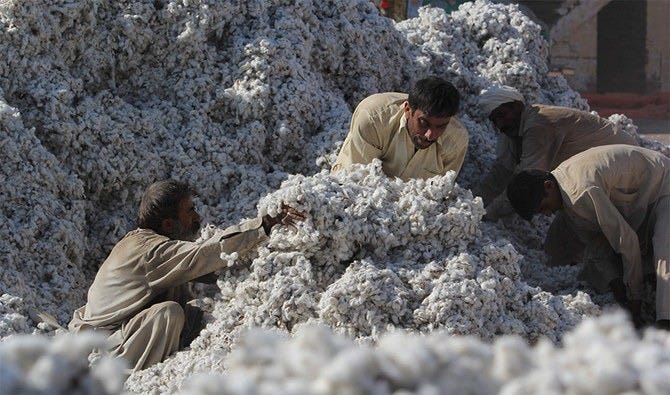Pakistan’s cotton industry struggles for survival amid policy gaps

In the heart of Pakistan's economy, the cotton industry stands at a crossroads, teetering on the edge of a deep crisis. The sector, which forms the backbone of the country’s textile value chain, is being squeezed by surging imports, policy lapses, and declining domestic production. The fallout threatens not only farmers and ginners but also the broader industrial and agricultural economies.
This situation draws parallels to Pakistan’s recent wheat crisis, where government inaction created ripples of financial distress for farmers and millers alike. If left unaddressed, the cotton sector’s predicament could escalate into a nationwide economic challenge with lasting repercussions.
Unprecedented import growth, a double-edged sword
A combination of government policy and market dynamics has driven cotton imports to unprecedented levels. Duty-free imports, intended to stabilize raw material supply for the textile industry, have instead created a lopsided market. Meanwhile, the imposition of an 18 per cent sales tax on domestic cotton and yarn further erodes the competitiveness of local producers.
Table: Import growth
|
Cotton imports (bales) |
Yarn imports (bales) |
|
October 31, 2024 |
800,000 |
|
November 30, 2024 |
1.1 million |
|
Projected 2024-25 |
5 million |
The data shows a steady rise in imports, culminating in a projected 5 million bales by the end of the 2024-25 cotton year—a record-breaking figure that underscores the deepening reliance on foreign cotton.
A disrupted ecosystem
Domestic cotton producers have borne the brunt of this import influx. Warehouse stocks have ballooned as local cotton struggles to find buyers, forcing prices to plummet by over Rs 1,000 per maund to Rs 17,500. For farmers and ginners, this means mounting losses, compounded by high input costs and limited financial support.
The parallels with the wheat crisis are stark. Just as wheat farmers saw their livelihoods jeopardized by a failure to secure government-purchased quotas, cotton farmers now find themselves navigating a hostile market devoid of institutional support.
Policy Gaps: The root of the crisis
Several policy missteps have exacerbated the cotton industry's challenges:
Duty-free imports: By removing duties on foreign cotton, the government has tilted the market in favor of imports, undermining domestic production.
Sales tax on domestic cotton: The 18 per cent sales tax on local cotton and yarn compounds the cost disadvantage for Pakistani producers.
Limited farmer support: A lack of subsidies or financial safety nets leaves farmers vulnerable to price shocks and escalating costs.
Reform and resilience
To pull the cotton industry back from the brink, the government must adopt a multi-pronged approach. First it needs a level playing field. Imposing a sales tax on imported cotton and yarn while eliminating the tax on domestic cotton would create a more equitable market dynamic. Enhanced research and development could improve domestic yields and cotton quality, boosting the sector’s competitiveness. Direct financial assistance and subsidized inputs could help farmers weather the crisis and adopt more sustainable practices.
The moot point is Pakistan’s cotton industry is at a critical juncture, facing challenges that mirror the country’s past struggles with wheat. A decisive and strategic response is essential to restore balance in the sector and protect the livelihoods of millions. By addressing policy gaps, fostering innovation, and providing robust support to farmers, the government can secure the long-term sustainability of this vital industry and shield the economy from further shocks.
